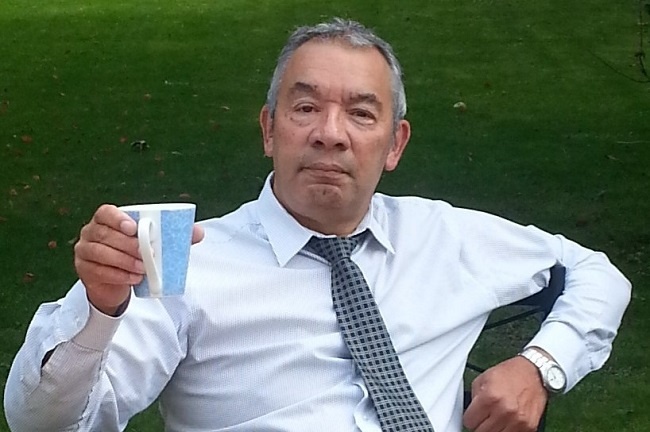CANSFORD LABS
A comprehensive guide to the Cansford Labs UK collections process
on Oct 11, 2018

For hair drug tests to stand up in court, you need to be sure that everything is done by the book. That means choosing an accredited lab, ensuring your client is prepared, a solid chain of custody, and accurate interpretation of the results.
Without these things, all of the money, time and client anxiety that a hair drug test involves may well be for nothing.
To explain how our collections process works and how it helps to resolve the challenges faced by our legal clients, we sat down with Chris Bell, head of our collections team, for his take on the process. Chris has been with Cansford Laboratories for six years, but has worked with our founder John Wicks since 2001. Before that, he ran the drug testing scheme for the Royal Navy, and having built the Cansford collections function from scratch, he’s the perfect person to explain how it all works.
Cansford Laboratories: So, Chris, how does the Cansford collections network work?
Chris Bell: We actually have a network of trained collectors throughout the country. I’ve been in the business so long that I have plenty of contacts: the first thing I did when John [Wicks, Cansford co-founder] brought me in was to contact them and see if they wanted to work for us. We now have 53 collectors UK-wide - a number that builds up every month. I’m about to train up another three who are joining in the next few weeks.
Only 60% of labs, roughly, have their own internal collections network and Cansford is one. For us, the main benefit is quality - we’ve heard some real horror stories about subcontracted companies. Leaving bald spots, failing to confirm donor identities, poor attitude towards donors, assuming donors must be guilty of something if they’re having to give a sample...with our own network, trained in-house, we can avoid these sorts of things.
CL: How do you ensure you employ the right people for the job?
CB: We’re very careful to recruit based not just on their ability to do the job, but on how they are as a person too. We know how important empathy is in the collector-donor interaction, and only recruit collectors who can show this empathy but be professional at the same time. That’s why we like ex-nurses - they’re ideally suited to this sort of work. They’re used to dealing with patients day-to-day, and they have a professional job to do, but at the same time, they keep smiling, and keep showing empathy to the client. They put them at ease, but they follow the procedures - and without the procedures, successful challenges could be made.
CL: How did the set of procedures used at Cansford come about?
CB: Chain of custody is a historical necessity for drug sample collections - it was probably led by the Americans, and we’ve adapted their procedures to suit. I wrote the procedures for Cansford, but they’re based on standard chain of custody procedures, in particular, the European Workplace Drug Testing Society guidelines.
Even if a new collector has followed chain of custody procedures before, we still train them in the Cansford way, to ensure we have consistency. Our collectors spend a full day in the lab with us when they come on board, watching demo sample collections (and doing some supervised role playing), then they witness the procedure from when the sample arrives at the lab, right through to the analysis and the sending out of the results report. I think we’re the only company to give our sample collectors the full picture of how things work: it highlights to them how important their role is, as they can see the effect on the lab process if things aren’t done by the book.
CL: How does the hair testing process work, from start to finish?
CB: First, we receive a request from the client, asking us to quote them for drug and alcohol testing, including a sample collection. We expect to respond to every quote in under an hour - and, in fact, it’s normally under 30 minutes. It’s one of the reasons clients like us: they don’t have to wait a couple of days for a response, as they may have to elsewhere. As soon as they’ve confirmed they’d like to proceed, we raise a sample collection appointment in our system, which appears in a collection queue with the highest priority requests at the top.
We then match the address the client has given us with our closest sample collector, and let them know where and when the sample is to be collected. If they can’t make it, we call the second closest collector, and so forth. If no collector can make it, we give the client alternatives.
Once an appointment has been made, we send automated confirmation to both client and collector, confirming the name of the collector, the address, the date and time of the collection and the samples that are to be taken. The collector then has to reply so we have absolute confirmation that they will be there, and that they have received all the information they need.
All of this will happen on the same day the client accepts our quotation. Every acceptance comes through to the whole team, meaning someone is always on hand to take responsibility for that client and to get the collection booked in.
CL: Are there any questions from clients that crop up on a regular basis?
CB: There are a few. “How long does it take?” “What facilities do we need to do the sample collection?” “Does it need to be witnessed?” “How much hair is required?”
The biggest one is, “How quickly will we get the results?” We generally turn around test results in 24 to 48 hours - and we do specify this on the documentation we send out - but half the time clients don’t believe us, as it seems too good to be true. And sometimes it almost works against us - people distrust it. People say, “You can’t possibly do that...you must be cutting corners...if there are another five labs out there taking a week to two weeks, you must be doing something that’s not right.”

We explain, though, that we founded this technology 22 years ago. So, first of all, we have more experience than any other European laboratory. Secondly we explain that Cansford's founders pioneered a brand new way of analysing hair samples. That means that while every other laboratory is using our old technology and methodology, we had the opportunity to start again, using modern instruments and cutting-edge research. That’s why we can do things that others can’t.
CL: Finally, are there any potential issues that lawyers should be aware of?
CB: The biggest issue is clients failing to turn up on the day of a collection. That happens a lot, probably at least a minimum of 30% of the time, if not 40%. At my previous company we worked out that 42% of sample collections never went ahead because the donor didn’t turn up.
We always encourage law firms to be proactive, reaching out to the clients with plenty of time, keeping in constant contact and making sure they’re fully educated around the process and the outcomes of the collection. A lot of donors are worried about us leaving bald patches or that we’ll assume guilt and not treat them respectfully. Tackling these concerns head on can make clients feel more at ease.
Of course, we can’t physically make them turn up. But we can provide the client with guidance and education which can be passed onto the donor to increase increase the likelihood they will.
At the collection appointment, by providing a clear explanation of the procedure and the expertise of our team we can minimise any fears of leaving unsightly bald patches or incorrect results ensuring the donor feels as comfortable as possible.
So...to my mind, setting expectations and giving education are key to a successful collection.
Many thanks to Chris for his time. To find out more about the use of hair drug and alcohol testing in social work, download our comprehensive ebook.

Lolita Tsanaclis
Dr. Lolita Tsanaclis, Chief Scientific Officer of Cansford Laboratories Limited, has been developing methods for the analysis of drugs in hair since 1993. She has been involved in drug testing using hair, blood and oral fluid samples for medico-legal and workplace sectors for over three decades. Dr Tsanaclis is published extensively as author and as co-author in highly regarded peer-reviewed publications and scientific presentations.

